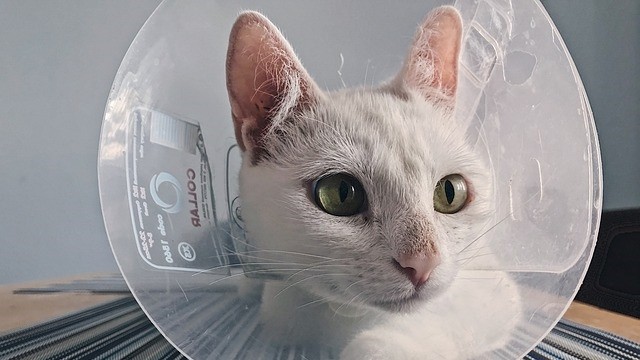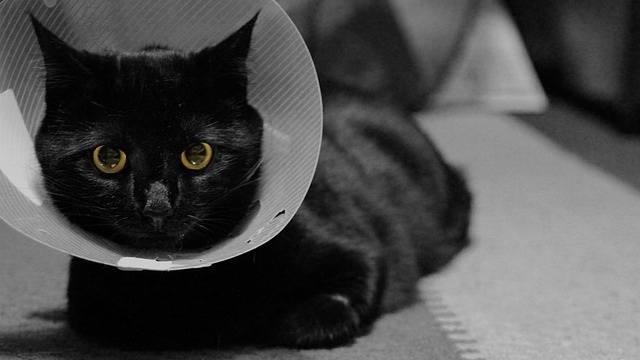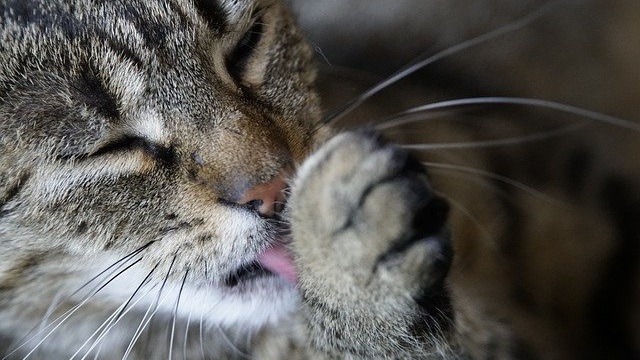Whether you have a new furry member in the family or are considering adding one, an important health decision you will eventually have to make is whether to neuter your cat or dog. At a certain point you’ll probably wonder – should it be done? When is the right time to do it? How risky is the surgery? Let’s discuss the benefits and risks of neutering a pet!
Benefits of neutering male pets

Neutering consists in removing the testicles of your male pet. It is a routine procedure, which usually does not require overnight hospitalization. It has an average recovery time of 7 to 10 days for dogs, and about 5 days for cats.
Let’s take a look at some benefits:
– It prevents testicular cancer
Testicular cancer is common in older pets. Fortunately enough, tumours are often benign – but they can reach considerable sizes and become very painful. The science here is pretty straightforward: if you remove the testicles, there is no chance for testicular tumours to develop.
– It prevents benign prostatic hyperplasia (BPH)
BPH is the most common prostatic disease, but thankfully it is non-cancerous. The prostate gland gets quite enlarged, causing discomfort, pain and obstruction of the urethra and colon. That’s why males suffering from this condition usually have a history of straining to urinate and defecate. With time, excess straining can cause inguinal or anal hernias and prolapses, which are usually expensive and difficult to treat.
– It keeps them closer to us
An intact male will do just about anything to find a mate! For dogs, this includes digging their way under the fence and escaping from the house… And for cats, it’s a free pass to spend endless nights away from home. Once they’re roaming freely, they risk getting ran over by a car or injured in fights with other males. These cat wrestling sessions may not only end up in severe wounds but also make it possible for feline viruses like leukaemia virus (FeLV) and feline immunodeficiency virus (FIV) to be transmitted.
– It promotes better behavior
While castration may not calm pets down, it can reduce males’ testosterone-driven actions such as mounting behavior and fights. It might also increase the pet’s focus, since they no longer look for the most beautiful gal around the block. That’s great news, because they will tend to center their attention primarily on their human families instead!
A downside of intact males, especially cats, is that they will keep exhibiting their natural but usually undesired territorial behavior… Such as spraying strong-smelling urine all over the house.
– It prevents unwanted litters
It won’t come as a surprise that castrated males are unable to breed. Sadly, every year millions of dogs and cats of all ages and breeds are euthanized or suffer as strays. Unplanned litters greatly contribute to these high numbers, which could be easily prevented just by spaying or neutering a pet.
Be aware that even if population control is important, neutering still requires a surgery and should only be performed by a certified vet in a safe and clean surgical environment.
Benefits of spaying female pets

Spaying consists in removing a female’s ovaries and uterus. It is a veterinary procedure and even though it is more invasive than the male surgery, usually it only requires minimal hospitalization. The average recovery time is about 10 to 14 days.
Let’s dive into the benefits of this procedure:
– It prevents uterine infections
A uterine infection is called pyometra and it is a common, life-threatening disease that requires surgery. The logic here is the same as with testicular cancer: if there are no ovaries or uterus, there is no way for an infection to arise.
– It reduces the chance of developing breast cancer
Mammary gland cancer is very common in non-neutered females due to the continuous sexual hormonal stimulation throughout life. It’s not possible to fully prevent the disease from happening, but spaying before the first heat is known to offer the best protection.
– No more unwanted visits
Spaying saves you from the trouble of dealing with males who are wildly attracted to your female in heat.
– No more heat season
Even if this might not be reason enough for many pet parents, the truth is that getting your buddy spayed ends the dilemma between having a dog in sanitary pads or having a mess all over the house. It also eliminates the rather unattractive odor often associated with a dog or cat in heat.
And which cat owner never despaired with a cat in heat? The good news is that the surgery also reduces the clingy behaviors and intense vocalizations that insist on coming with every cycle.
– It prevents unwanted litters
Spayed females are unable to give birth to any puppies or kittens and therefore will not contribute to overpopulation. Hundreds of thousands of sheltered pets are put to sleep every year because there is no room for them all, unfortunately.
Risks of neutering a pet

Although neutering is a common and routine procedure, no surgery comes without risk. Anesthetic problems, like allergic reactions, or excess bleeding during surgery can happen. Thankfully though, those are very rare. Swelling or infection of the wound is seen more commonly, but is easily treated.
Another thing to take into account is that the pet’s energy requirements reduce after neutering, because their metabolism decreases. That’s why neutered dogs and cats are more prone to weight gain. This is easily managed by feeding them a proper diet and adding some extra exercise routines. Your pet will remain fit and trim as long as you continue to provide exercise and monitor their food intake.
Some dogs may also experience a change in their coat, but this is purely aesthetic.
The most significant cons – especially when neutering a pet in young ages – are:
- a greater incidence of urinary incontinence;
- a higher risk of bladder infections;
- a greater incidence of anterior cruciate ligament injuries.
Side effects are not very common and still lack further scientific research. Still, it’s important for you to be aware of the downsides and what to do to prevent them from happening. Reach out to our veterinary team or talk to your vet and learn how to deal with these matters.
The right time to neuter

The first heat cycle occurs somewhere around six to seven months of age. Many vets will wait until a pet is close to that age to spay them, as they will cope better with the required anesthesia. Nevertheless, younger animals, whether male or female, can be safely neutered as long as they are healthy and growing properly.
Vets will typically not recommend spaying while your buddy is in heat. The procedure can be performed, but it is usually more complicated since the number and size of the reproductive tract’s blood vessels is increased.
The best way to find out when the most appropriate time to neuter is, is by asking a vet for medical advice. Not only will your pet’s needs be taken into consideration, but also the family’s lifestyle, which will make the recovery easier and faster.
Conclusion

Now you have all the scientific and factual information to make the best health care decisions concerning this topic. Fortunately, for the majority of our beloved pets, the health benefits outweigh the risks linked to the surgery. If your best friend is still not neutered and you do not intend to breed them, then it is worth to seriously ponder this approach.
Our Findster Care vet team can advise you on whether neutering is the right decision or not – feel free to reach out!
Neglected pet nails can lead to serious issues. Learn more about dog nail trimming and clipping cat nails, including how to do it safely!






